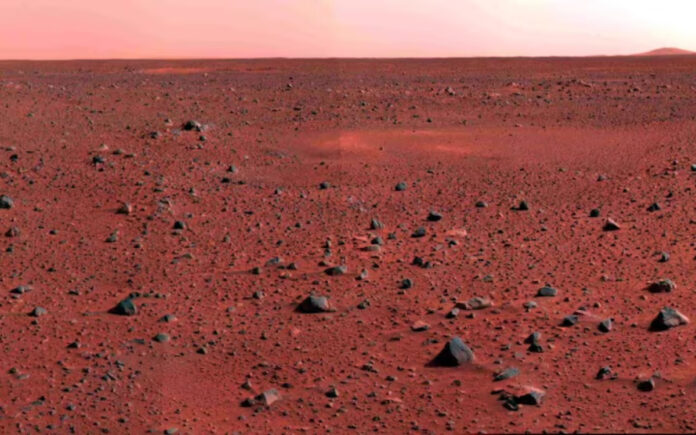New York: Transforming Mars into a more hospitable environment for human life is a familiar concept in science fiction, but could it become a reality? Scientists are now proposing a novel approach to warm up the Red Planet by introducing engineered particles—akin to commercial glitter—into its atmosphere. These particles, made from iron or aluminum, would be dispersed as aerosols to trap escaping heat and scatter sunlight, potentially increasing Mars’ surface temperature by about 50 degrees Fahrenheit (28 degrees Celsius) over a decade.
While this method alone would not make Mars immediately habitable, it represents a feasible initial step toward planetary modification. “Terraforming involves adjusting a planet’s environment to make it more Earth-like. For Mars, warming the planet is essential but not sufficient on its own,” said Edwin Kite, a planetary scientist from the University of Chicago and co-author of the study published in Science Advances.
Kite explained, “Our paper introduces a novel approach using engineered nanoparticles to enhance Mars’ atmosphere, supported by climate modeling that suggests this method could be more efficient than previous ideas. This could provide valuable insights for future Mars exploration.”
NASA has been exploring Mars with robotic rovers and the InSight Lander and aims to return astronauts to the Moon through the Artemis program as a stepping stone for future Mars missions. However, numerous challenges remain for human settlement on Mars, including its thin atmosphere, lack of breathable oxygen, and extreme cold.
Also Read | Nigerian Businesses Reeling from Losses After Inflation Protests
“We hope to demonstrate that warming Mars is not an impossible task. Our findings may inspire further scientific inquiry and public interest in this fascinating idea,” said Samaneh Ansari, the study’s lead author and a doctoral student at Northwestern University.
Mars currently has a median surface temperature of about minus-85 degrees Fahrenheit (minus-65 degrees Celsius). With its tenuous atmosphere, solar heat quickly escapes into space. The proposed solution involves continuously releasing tiny rod-shaped particles—nanorods—into the Martian atmosphere at a rate of around eight gallons (30 liters) per second over several years.
Also Read | Ukraine Escalates Conflict with Major Drone Attack on Russia’s Lipetsk
Ansari noted, “The goal is to either transport the materials or, ideally, bring manufacturing tools to Mars to produce these nanorods on-site, as iron and aluminum are abundant there.”
The researchers also caution against potential unintended consequences of terraforming. “The benefits and risks of this approach are still uncertain. If Mars harbors irremediable toxic compounds or existing life forms, the benefits of warming the planet might be diminished. Conversely, establishing a photosynthetic biosphere could enhance human potential in the solar system,” Kite said.



